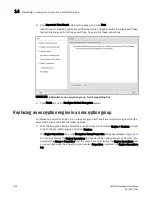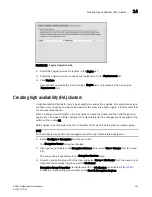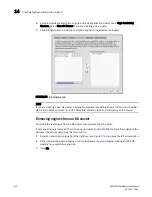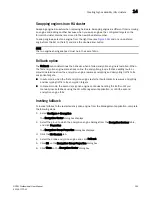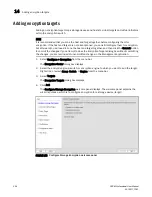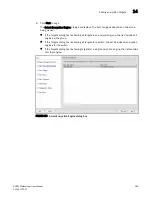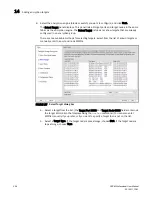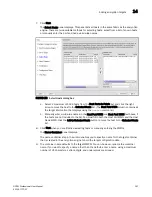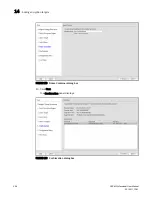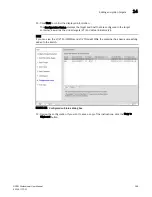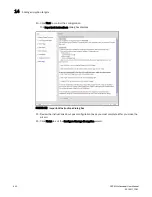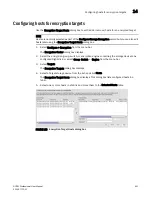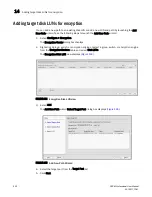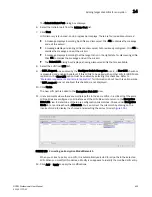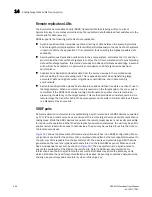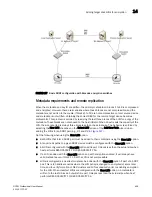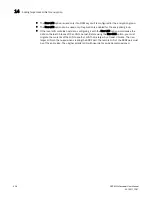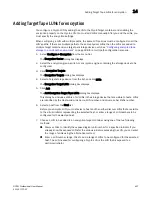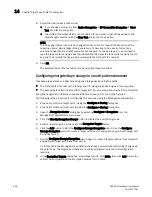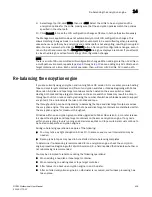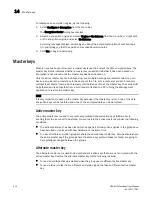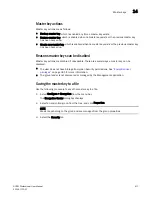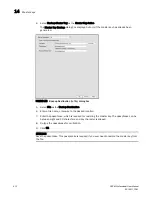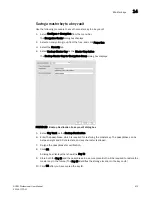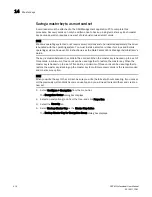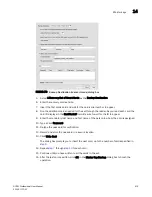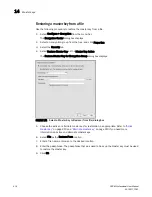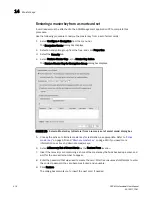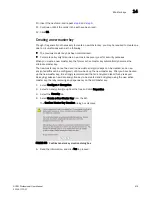
404
DCFM Professional User Manual
53-1001773-01
Adding target disk LUNs for encryption
14
Remote replication LUNs
The Symmetrix Remote Data Facility (SRDF) transmits data that is being written to a local
Symmetrix array to a remote symmetrix array. The replicated data facilitates a fast switchover to the
remote site for data recovery.
SRDF supports the following methods of data replication:
•
Synchronous Replication provides real-time mirroring of data between the source Symmetrix
and the target Symmetrix systems. Data is written simultaneously to the cache of both systems
in real time before the application I/O is completed, thus ensuring the highest possible data
availability.
•
Semi-Synchronous Replication writes data to the source system, completes the I/O, and then
synchronizes the data with the target system. Since the I/O is completed prior to synchronizing
data with the target system, this method provides an added performance advantage. A second
write will not be accepted on a Symmetrix source device until its target device has been
synchronized.
•
Adaptive Copy Replication transfers data from the source devices to the remote devices
without waiting for an acknowledgment. This is especially useful when transferring large
amounts of data during data center migrations, consolidations, and in data mobility
environments.
•
Asynchronous Replication places host writes into chunks and then transfers an entire chunk to
the target system. When a complete chunk is received on the target system, the copy cycle is
committed. If the SRDF links are lost during data transfer, any partial chunk is discarded,
preserving consistency on the target system. This method provides a consistent point-in-time
remote image that is not far behind the source system and results in minimal data loss if there
is a disaster at the source site.
SRDF pairs
Remote replication is implemented by establishing a synchronized pair of SRDF devices connected
by FC or IP links. A local source device is paired with a remote target device while data replication is
taking place. While the SRDF devices are paired, the remote target device is not locally accessible
for read or write operations. When the data replication operation completes, the pair may be split to
enable normal read/write access to both devices. The pair may be restored to restore the data on
the local source device.
Figure 167
shows the placement of Brocade encryption switches in an SRDF configuration. When
encryption is enabled for the primary LUN, encrypted data written by the local application server to
the primary LUN is replicated on the secondary LUN. The data is encrypted using a DEK that was
generated on the local encryption switch and stored on the local RKM key vault. When each site
has an independent key vault, as shown in
Figure 167
, the key vaults must be synchronized to
ensure the availability of the DEK at the remote site. Refer to RKM user documentation for
information about how to synchronize the key vaults. Both sites may share the same key vault,
which eliminates the need for synchronization across sites. Depending on distance between sites,
sharing a key vault may add some latency when retrieving a key.
Summary of Contents for Brocade BladeSystem 4/12
Page 1: ...53 1001773 01 14 April 2010 DCFM Professional User Manual Supporting DCFM 10 4 X ...
Page 3: ...DCFM Professional User Manual iii 53 1001773 01 ...
Page 4: ...iv DCFM Professional User Manual 53 1001773 01 ...
Page 88: ...56 DCFM Professional User Manual 53 1001773 01 Seed switch 2 ...
Page 146: ...114 DCFM Professional User Manual 53 1001773 01 Customizing the main window 4 ...
Page 152: ...120 DCFM Professional User Manual 53 1001773 01 Launching HCM Agent 5 ...
Page 246: ...214 DCFM Professional User Manual 53 1001773 01 Syslog forwarding 8 ...
Page 262: ...230 DCFM Professional User Manual 53 1001773 01 Generating zoning reports 10 ...
Page 662: ...630 DCFM Professional User Manual 53 1001773 01 ...

